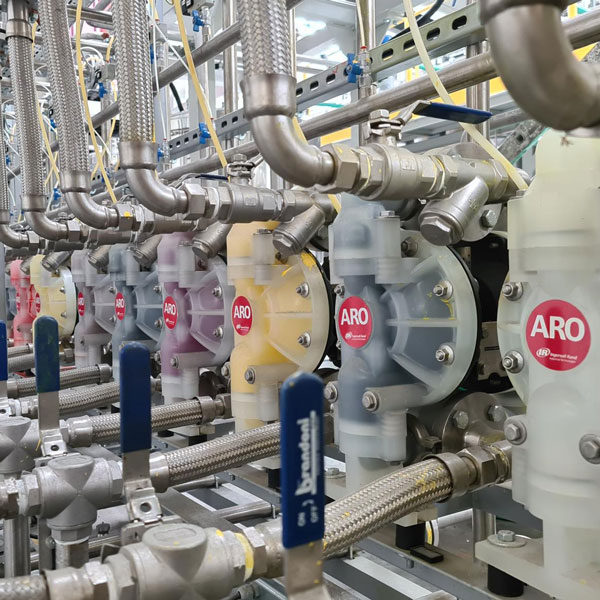Choose a different country or region to see the content specific to your location
Select Your Country/Region
Current Region:
 Global (EN)
Global (EN)
How can we help you?
An air operated double diaphragm pump is a pneumatic pump that uses an air valve that directs compressed air between two sides of the pump, back and forth.
Air operated diaphragm pumps can transfer liquids with low, medium or high viscosities, as well as liquids with suspended solids. They also can handle many aggressive chemicals such as acids because they can be constructed with a wide variety body materials and diaphragms.

As general workhorse devices, AODD pumps are utilized in many different applications, including:

AODD pumps utilize dual flexible diaphragms mounted to a shared shaft which moves back and forth repeatedly in strokes to pump fluids into and out of the pump’s fluid chamber. This movement creates a vacuum, which intakes fluid through an inlet port.
When the diaphragms are subsequently pushed in the opposite direction back to their original positions via compressed air, the fluid is expelled from the product chamber via an outlet port. This cycle repeats while the AODD is in operation, which creates the pumping action this device is known for.
In Figure 1, the left diaphragm has been forced towards the fluid chamber, and in doing so has displaced the liquid through the open valve at the top of the discharge port. At the same time liquid is drawn into the right-hand chamber via the right diaphragm. At the end of the stroke, the positions are reversed and the cycle repeats in the opposite direction, as shown in Figure 2.
AODD pumps offer a number of advantages, namely:

AODD pumps come with a range of benefits and can have somewhat specialized requirements for their installation. Adhering to these instructions can help avoid a variety of costs and damages to your AODD pump:
In the event of failure of your AODD pump, you should check the following: